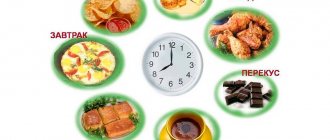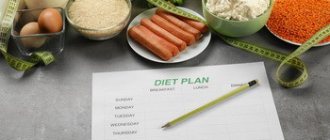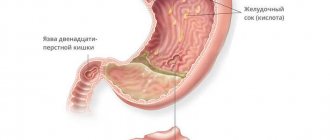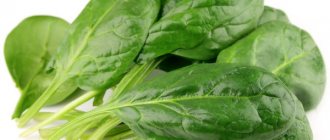When is the “second table” appointed?
The division of food into “tables” came from Soviet health resorts and hospitals. Patients with the same diagnosis and similar symptoms were grouped at numbered tables and fed specific dietary dishes. For gastritis, people were seated at table 2 with:
- chronic hypoacid gastritis, except during periods of exacerbation;
- stage of recovery from acute gastritis;
- chronic non-aggravated enteritis and colitis;
- functional failure of the masticatory apparatus;
- recovery period after gastrointestinal infections and operations.
Diet 2 for gastritis is complete in the content of essential nutrients. It has a direct impact on the causes of the disease and increases the effectiveness of treatment. Failure to comply with the rules of therapeutic nutrition will lead to exacerbation of gastritis and complications.
Basic rules of diet No. 2
The diet allows you to provide all the physiological needs of the patient. It is allowed to eat food of varying degrees of grinding, but with the obligatory refusal of dishes with a crispy crust. It is unacceptable to consume foods that linger in the gastrointestinal tract for a long time and can cause fermentation, flatulence and bloating. You should not consume food that can irritate the mucous membrane, excessively hot or cold dishes.
60% of the menu should be proteins. The total calorie content of the daily diet should not exceed 3 thousand units. No overeating, you should eat at least 5 times a day, in small portions that will not overload the gastrointestinal tract.
Therapeutic nutrition is prescribed after the symptoms of exacerbation are relieved. As a rule, in order to quickly relieve an exacerbation, it is recommended to eat fruits, but always fresh and only juicy. You can have juices. Then curd masses, puree soups, and boiled porridges are gradually introduced.
During diet No. 2, it is assumed that a sufficient amount of liquid is included. We are talking about 8-10 glasses of water. However, a complete ban on liquid consumption during meals, only before or after. Any drink, including water, helps slow down digestion.
Fractional nutrition involves not only frequent meals, but also thorough chewing of food. Foods that contain the maximum amount of vitamin C are introduced to achieve the required level of acidity in the stomach. It is recommended to add apple cider vinegar and lemon juice to dishes. Sour juices and drinks are introduced.
Foods high in fat are kept to a minimum. Such foods, like legumes, negatively affect the digestive process, slowing down and aggravating it.
Methods of preparing and serving food
Products are boiled, stewed, baked, fried without crust. The meat is minced with a meat grinder or shredding. High fiber vegetables are pureed. Grind fruits and berries until smooth, cook compote, beat mousse or jelly. Moderately rich broths from lean meat, fish, mushrooms, and vegetables are allowed. Cereals and vermicelli boil well. First courses have a temperature of less than 60 °C, second courses - up to 40 °C, cold appetizers - at least 15 °C. Modest portions of food are evenly distributed over 5 meals per day.
General principles, or proper nutrition for gastritis of any form
- Four to five small meals
- Complete abolition of coarse, spicy, salty and smoked foods
- Be careful with dairy products and fresh vegetables and fruits
But dietetics is a very finicky subject and requires an individual approach in each new case. Thus, chronic gastritis has its own characteristics, which means that the nutrition of a sick person can be based on a specific scenario.
According to the medical encyclopedia, chronic gastritis can be divided into several subtypes, each of which has its own diet:
- If secretory activity is preserved or increased, a similar diet is recommended as for gastric and duodenal ulcers. Therefore, food for gastritis should not be too spicy, sour or salty.
- If chronic gastritis is accompanied by secretory insufficiency, then the person suffering from this disease is shown diet number 2, which is aimed at improving the processes of digestion and absorption of nutrients.
The goal of dietary nutrition in any case is to slow down the negative progressive processes associated with inflammation and irritation of the gastric mucosa. The diet is designed to fight the disease, taking into account the body’s need to receive a complete set of nutrients and nutrients.
Authorized products
Meat products allowed include chicken and turkey fillet, rabbit, and beef tenderloin. With stable positive dynamics, lamb and pork tenderloin is allowed. The liver and tongue are used to make pates, aspic, or simply boiled. You can supplement your diet with sausages for baby food, simple sandwiches with doctor’s sausage, and premium ham.
Fish – pink salmon, hake, pollock, greenling, pike perch, salmon, trout, bream. They are used to prepare aspic, cutlets, bake, fry, stew. Make a pate with butter from herring, previously soaked for 1 hour in milk. You can caviar valuable species of fish.
Porridges made from oatmeal, semolina, rice, and buckwheat. Prepared with milk, broth, water. Vermicelli and pasta are used as a side dish or added to soups, for example, noodle soup with mushroom broth.
Soups are prepared using meat, fish, mushroom, and vegetable broths. The vegetables in the first courses are finely chopped, boiled well, and kneaded. Vegetable puree soup is very healthy. Recommended first courses are traditional Russian cabbage soup with fresh cabbage, beetroot borscht, rassolnik with brine instead of cucumbers, soup with profiteroles.
Boiled vegetables are served as a side dish. Potato, carrot, and beet salads are served with sour cream or sunflower oil. White and cauliflower cabbage, as well as pumpkin, zucchini, and green peas are baked and stewed. Ripe tomatoes are eaten fresh. Finely chopped dill and parsley are used to season first and second courses.
Ripe, sweet fruits and berries from their native climate zone are used for compotes, fruit purees, jellies, jelly, and mousses. Baked apples, fresh watermelon, citrus marmalade, and lemon in tea are allowed. Concentrated juices are diluted by half with water.
Dairy and fermented milk products are represented by boiled or baked milk with a fat content of up to 3.5%, kefir, fermented baked milk, bifilux. Curd products with cream and sour cream up to 20% fat, soft cheese, fresh butter or melted butter are widely used. They prepare cottage cheese and fruit casseroles, cheesecakes, and dumplings.
Flour products – dried white day-old bread, savory buns, dry cookies or biscuits, baked pies.
Chicken and quail eggs - soft-boiled, cheese and milk omelet, scrambled eggs without frying.
Desserts - jam, marmalade, jam from fruits and berries of their climate zone. Pastila, marshmallows without chocolate. Honey - no more than 3 teaspoons per day.
Sauces - milk, sour cream, with bay leaf and herbs.
It is advisable to drink cocoa with milk; milk, cream, and lemon are added to tea. A handful of washed rose hips is brewed in a thermos with a liter of boiling water, left for 3 hours and a rose hip decoction rich in ascorbic acid is obtained. Fruit and berry compotes and jelly contain the necessary vitamins. The consumption of kvass, alcohol, and sweet carbonated drinks is strictly prohibited.
Prevention and treatment: interesting to know
Sanatorium-resort treatment in health resorts, famous for their own salt-alkaline springs, implies mandatory adherence to a diet. Together with dietary measures, patients are offered to regulate the secretory processes of the gastrointestinal tract with the specific intake of alkaline and hydrochloric-alkaline mineral waters:
- 15-20 minutes before meals - water has a stimulating effect
- 1.2-2 hours before meals – help reduce the rate of secretory activity
General nutritional recommendations help improve the quality of life and get rid of the unpleasant symptoms of gastritis, as well as take preventive measures to avoid the development of this disease in a healthy part of the population.
Watch the video of the round table discussion on the problem of Helicobacter pylori, a bacterium that causes gastritis. At this round table there are three doctors of medical sciences, as well as one candidate of chemical sciences. The composition of the participants is very authoritative, accordingly, the information can be very, very useful (although it will take an hour of free time to view):
Weekly diet
Drawing up a diet menu for the week will simplify the integration of healthy, healthy foods into your diet and increase the effectiveness of therapy. We also recommend that you familiarize yourself with table 1.
Monday
In the morning - 2 eggs in the form of an omelet, tea with milk, bread. This is followed by the second breakfast - boiled rice porridge with milk, compote of dried apricots and dried apples, oatmeal cookies. Lunch consists of pickle soup with chicken, potatoes boiled with butter and dill, and rosehip infusion. For an afternoon snack - fresh tomatoes with vegetable oil, bread, tea. Dinner – pollock baked with cauliflower, compote. 2 hours before bedtime, drink berry jelly and eat a piece of bread.
Tuesday
For the first breakfast - liquid milk semolina porridge, cocoa. Before lunch, grind 100 g of cottage cheese with sour cream and compote. For lunch, prepare vegetable soup, pureed, beef cutlet with pasta, tea.
Before dinner - fruit jelly, compote. The main evening meal is pink salmon with stewed carrots and rosehip broth. Before bed - kefir.
Wednesday
It starts with a cottage cheese and fruit casserole and rosehip decoction. The second breakfast will consist of a baked apple, cookies, tea. Lunch – cabbage soup with turkey, sausage with crumbly buckwheat, compote. The afternoon snack consists of cocoa and a slice of loaf. Dinner – hake with sour cream sauce, stewed pumpkin, tea. Ryazhenka before bed.
Thursday
In the morning you can cook soft-boiled eggs (2 pieces) with a slice of tomato, bread, and drink compote. After 3 hours - oatmeal milk porridge, cocoa, bread. Lunch – borscht seasoned with fresh sour cream, turkey cutlet with rice, tea with lemon. Afternoon snack – baked apple, cheese sandwich, rosehip infusion. For dinner - pike perch baked with zucchini and carrots, tea. At night - a glass of yogurt.
Friday
For the first breakfast - rice, stewed with pumpkin, tea. For lunch - cottage cheese mashed with banana and sour cream, rose hips in a decoction.
For lunch - noodle soup with mushroom broth, chicken breast stewed with potatoes, tea. Afternoon snack – cocoa with a savory bun. Dinner – chicken liver soufflé, compote. Before bed - kefir.
Saturday
In the morning, prepare dumplings with curd filling, seasoned with sour cream, and tea. Before lunch - a sandwich with ham, compote. Lunch – soup with salmon and vegetables, pasta with chicken cutlet, compote. Between lunch and dinner - pear baked with dried apricots, tea. Dinner consists of oatmeal with berry jam and cocoa. At night - fermented baked milk.
Sunday
For the first breakfast, boil semolina in milk and drink tea with orange marmalade. For lunch - fruit and berry jelly, a savory bun. Lunch – vegetarian cabbage soup, crumbly buckwheat with low-fat pork cutlet, compote.
Afternoon snack – cheesecakes with honey, rosehip infusion. Dinner – pike perch meatballs with rice, tea. At night - compote and oatmeal cookies.
During treatment, you must not deviate from the rules recommended by the diet. The course of therapeutic nutrition is from six months to a year. It is recommended to abstain from smoking, alcohol, spicy, fried, sour, and smoked foods. The absence of stress and nervous tension will have a positive effect on the outcome of treatment.
We recommend: What is focal atrophic gastritis and how to treat it?
Prohibited products and sample menu
The following foods are strictly prohibited for gastritis:
- Fried dishes
- Sweet products
- Any canned food, marinades, smoked foods
- Raw fruits and vegetables (tomato, cucumber, orange, etc.)
- Carbonated drinks
- Fatty meats
- Black bread
- Legumes
- Pure milk
- Food at the wrong temperature (too hot or cold)
Sample menu for the day, according to diet No. 2
| meal | Dish option | Portion, gram |
| Breakfast | 1. Cottage cheese soufflé, baked | 150 |
| 2. Milk buckwheat porridge, pureed | 300 | |
| 3. Tea | 180 | |
| Dinner | 1. Broth | 500 |
| 2. Meat cutlets | 900 | |
| 3. Carrot puree | 200 | |
| 4. Fruit and berry jelly | 125 | |
| Afternoon snack | Tea with crackers | Taking into account the daily intake of liquid and permitted bakery products |
| Dinner | 1. Fish balls | 130 |
| 2. Mashed potatoes | 200 | |
| 3. Oatmeal with milk, pureed | 200 | |
| 4. Tea | Taking into account previously drunk liquid |
The daily intake of white bread is 400 grams, sugar is 25 grams, butter is 25 grams.
Menu options for diet
Steam omelet (soft-boiled egg, cottage cheese casserole); oatmeal, semolina, buckwheat, rice porridge with butter; tea or coffee drink.
Lunch
Cottage cheese with sour cream (cereal casserole, baked apple, jelly); kefir (ryazhenka, tea with herbs).
Chicken noodle soup (vegetable soup with pureed rice, creamy mushroom soup with drinking cream); steam cutlet (steamed fish, steamed poultry) with steamed vegetables (vegetable puree with butter, large side dish); jelly (mousse, smoothie).
Crackers (dried bread, savory bun) with tea (coffee drink, compote).
Boiled vegetables with boiled meat (poultry, fish); fruit salad with sour cream (baked fruit with honey).
Late dinner (at least two hours before bedtime)
Kefir (fermented baked milk, tea with milk, jelly).
As you can see, the need to adhere to a diet does not mean that the patient will have to starve. Using all available and permitted methods of cooking, he can create various dishes from permitted products.
source
Treatment of gastritis with diet Table 2
What is possible and what is not allowed when eating according to diet table No. 2. Nutrition menu for gastritis.
Following any diet will require patience and consistency from the patient. No matter how tasty the permitted foods are, over time you may get bored with them. In this case, you need to remember that such nutrition preserves the health of the stomach and allows the patient to lead a full life, regardless of the degree of the disease, without regard to possible ailments from the gastrointestinal tract.
At any stage of gastritis, a fasting diet is extremely necessary. It is important not so much to lose weight as to “rid” the body of toxins and waste that clog the digestive system.
We present to you a list of recommended products for the upcoming period of time dedicated to diet Table number 2:
- milk porridge;
- vegetable soups;
- vegetable and fruit purees;
- skim cheese;
- weak tea with milk.
And here is the list of forbidden “delicacies” that you so dearly love:
- fried and smoked meat;
- baking;
- seasonings;
- chocolate, halva, ice cream;
- carbonated drinks;
- strong tea and coffee;
- alcohol.
If your body is highly acidic, the logical and wise thing to do is to exclude acidic foods from the menu. Salty food is also a strict taboo. The above should be replaced with vegetable soups and purees. Contrary to all stereotypes and prohibitions, it is recommended to eat soups with white soft bread.
Also, for gastritis with high acidity, meat is also allowed in the menu of the therapeutic diet Table number 2. But not very fatty, since every percentage of fat content can contribute to the development of the disease.
For gastritis with low acidity, diet number 2 recommends adding several acidic foods to your menu. You should also add sweet fruits and berries, dairy products and lean meat to your diet. In this case, it is strictly contraindicated to consume baked goods, alcohol and fatty foods.
With atrophic gastritis
A disease of the gastric mucosa, that is, atrophic gastritis, implies a ban on baked goods, fatty broths, eggs, meat, sauces, chocolate and carbonated drinks, as these products contribute to its development.
As for healthy foods for the treatment of atrophic gastritis, diet Table number 2 “allows” the consumption of the following foods: soups, flour products, cereals, dairy products, vegetables and fruits.
For stomach ulcers and pancreatitis
If you have a stomach ulcer, it is strictly forbidden to consume foods in your menu that contribute to “irritation” of its walls.
These are:
- broths;
- mushrooms;
- canned and smoked products;
- dairy products;
- nuts and dried fruits;
- ice cream and chocolate;
- strong hot drinks;
- carbonated drinks;
- alcohol.
The list of diet benefits in this case, Table number 2, includes:
- meat, dairy and cereal soups;
- honey, marshmallows, jam;
- freshly squeezed juices, unsweetened tea and compote.
For pancreatitis, diet Table number 2 recommends eating steamed vegetables, milk porridge, jam, compote, jelly and weak tea.
Prohibited are semi-finished products, fried and smoked foods, coffee, sour fruits and carbonated drinks.
This type of therapeutic nutrition completely excludes foods that can irritate the gastric mucosa and cause active production of gastric juice.
The following rules must be observed:
- food should only be warm and thoroughly chopped;
- nutrition involves fractional meals;
- For cooking food, only steam processing and cooking are used.
Quite often, hypoacid gastritis occurs simultaneously with colitis. And the dietary food “Table number two” can be prescribed both for the treatment of gastritis and colitis.
For this purpose, nutrition for hypoacid gastritis and colitis includes the following products:
- meat of “skinny” varieties;
- rich broths;
- soups with fish and vegetables;
- “skinny” varieties of fish;
- vegetables and fruits baked in the oven;
- from drinks - juices, coffee and cocoa, sweet juices, jelly and compotes;
- pasta;
- cheeses (fresh);
- of fats – only vegetable oils.
If the production of gastric juice is poor, as well as with diagnosed colitis, the following products are prohibited:
- fresh baked goods, pure milk, grapes and others, i.e. products that promote the development of fermentation in the gastrointestinal tract;
- complex foods to digest - cream, sour cream of various fat contents and animal fats;
- sorrel and spinach;
- spicy, salty, fried foods.
When following this diet, it is recommended to eat baked, stewed, boiled foods; fried foods should not have a rough crust (you cannot bread them in flour or breadcrumbs). It is also necessary to eat pureed foods rich in fiber or connective tissue.
But foods that are difficult to digest, linger in the stomach for a long time and irritate the mucous membrane of the gastrointestinal tract must be excluded from the diet. In addition, spicy seasonings and extremely hot and cold foods are prohibited.
The amount of salt consumed per day should be reduced to 15 g, the volume of free liquid - to one and a half liters. The diet is split, 4-5 times a day.
A strict diet for gastritis with low acidity is aimed at maintaining a gentle diet, as well as stimulating the gastric glands with food irritants. A stimulating menu involves eating dietary meats such as rabbit, chicken, turkey, low-fat fermented milk products, baked fruits, and vegetable purees.
In addition, you can eat onions, radishes, garlic, sour berries, raw fruits and juices in small quantities. At the same time, it is forbidden to eat milk, fatty meat and fish, canned and smoked foods, as well as coarse fiber products.
The goal of a diet for gastritis with high acidity is to reduce the acidity of gastric juice by eliminating from the diet such foods and dishes that can serve as thermal, chemical or mechanical irritants.
The mechanical group includes products that are enriched with coarse fiber. Chemical - products that promote excessive secretion of gastric juice.
Thermal food includes excessively cold or very hot food.
Patients should remember that the prescription of dietary dishes for gastritis is individual. Compliance with a particular diet is always determined and monitored by a doctor. Under no circumstances should you prescribe your own diet for a disease such as gastritis. The gastroenterologist decides which diet is suitable for each patient.
Hello, my dear!
For many years now I have been appearing on your TV screens every day and more than once we have talked about problems of the gastrointestinal tract. Much has been said about methods of treating stomach diseases.
In our program, we often talk about surgery and medicinal procedures, but we very rarely touch upon traditional methods. And not just recipes from grandmothers, but what was recognized in the scientific community, and of course, recognized by our TV viewers.
Today we will talk about the healing effects of teas.
Surely you are now at a loss about what other healing teas we can talk about in the treatment of the gastrointestinal tract? Indeed, ordinary tea can help in the treatment of such serious diseases as ulcers, gastritis, pancreatitis, etc. If you remember, several issues ago I talked about the possibility of triggering the regeneration of the body by influencing certain receptors of the cells of our body.
So, to heal the gastrointestinal tract and more, you need to start the return process, that is, return the cells to their original state. After all, medicine, for the most part, is a struggle with the investigation.
But it is necessary to eliminate exactly the cause and return the body to its original state. That is why, after taking the correct dosage of certain substances contained in the Monastic Tea drink.
Almost all patients feel light, as if they were born again. Men, in turn, felt a surge of strength, lasting potency, a powerful surge of energy, and began to get better sleep.
Tea therapy helps to cope with such terrible diseases as ulcers, gastritis, colitis, pancreatitis, dysbacteriosis, stool problems, etc. When we have problems, gastrointestinal diseases destroy the body, and when everything is fine, the body comes into tone. That is, the entire system directly affects the state of the body. And this connection helps fight the disease as effectively as possible.
And how does it work, you ask? Will explain. Tea therapy, with the help of specific substances and antioxidants, affects certain receptors that are responsible for its regeneration and performance. Information about diseased cells is rewritten to healthy ones. As a result, the body begins the healing process, namely, it returns, as we say, to the point of health.
Therapeutic diet No. 2 is most often prescribed to patients with various forms of gastritis. It is also possible to prescribe this diet for stomach ulcers and other diseases of the gastrointestinal tract.
Main courses for gastritis can be prepared from:
- vegetables;
- lean meat;
- fish;
- eggs;
- dairy products.
The ingredients are used mainly pureed.
We advise you to eat dietary foods boiled, baked or stewed, rather than fried, so as not to irritate the gastric mucosa. In addition to the second, it makes sense to make light special salads.










